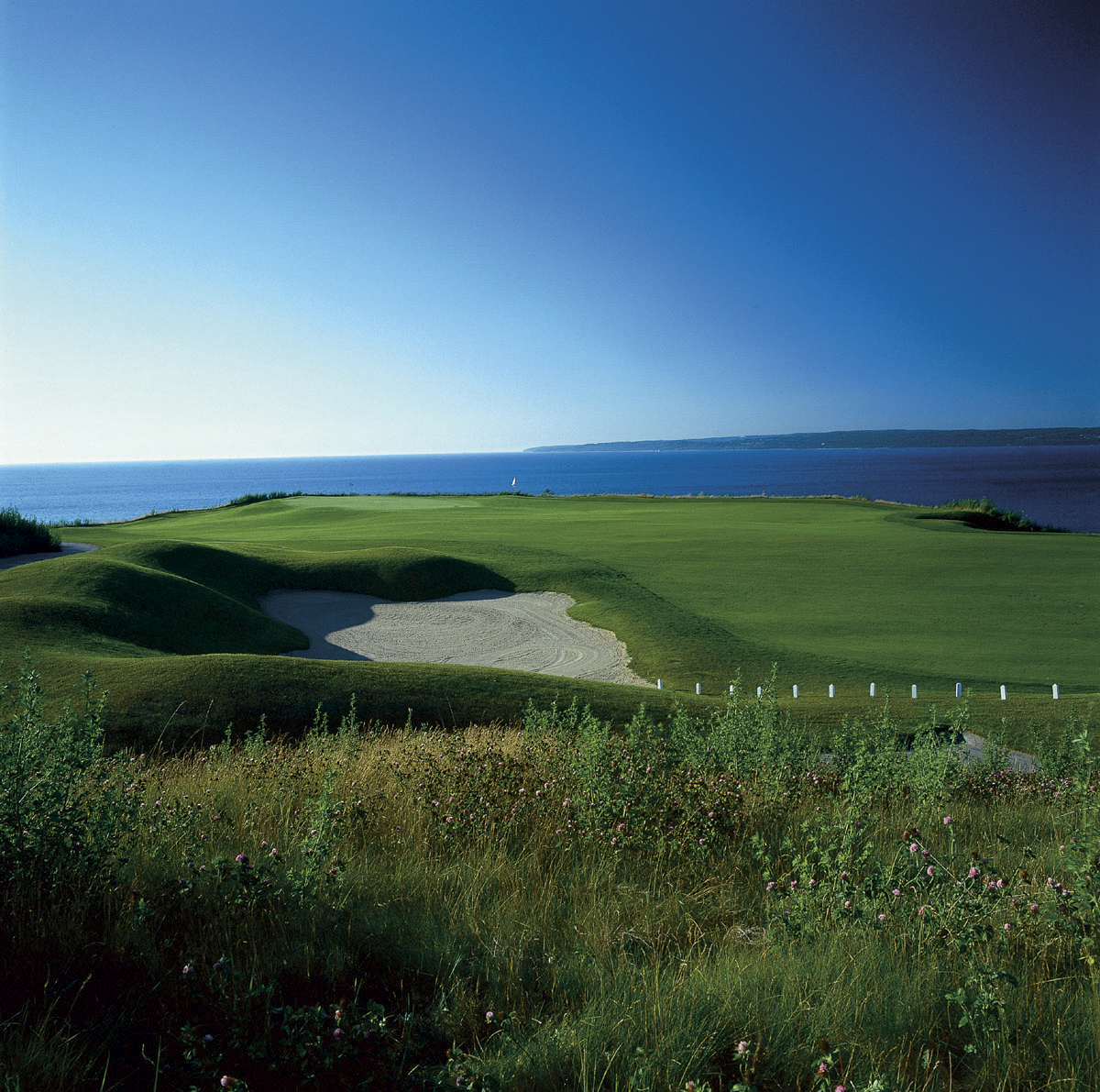
HOT SPRINGS, Ark. — Golf is going green. The transformation of barren industrial waste sites into lush green courses and irrigation with recycled water will be some of the latest trends discussed at the symposium, “The Nature of Golf: Designing Courses to Play a Role in Ecological Reclamation and Environmental Health.”
Organized by the University of Arkansas department of landscape architecture, the symposium will take place from 9:30 a.m. to 3 p.m. on Friday, April 28, at Garvan Woodland Gardens, the university’s botanical garden in Hot Springs.
Until recently, the only thing green about the game was the grass.
“Clearing the land and maintaining the greens can lead to loss of wildlife habitats, land erosion and runoff laced with herbicides, pesticides and fertilizers,” said Fran Beatty, head of the department of landscape architecture. “Now landscape architects and developers view golf courses as an opportunity to heal the environment — and make money.”
And how. Larry Lundine, founder of the Brownfield Solutions Group in Overland Park, Kan., and keynote speaker at the symposium, noted that there are 700,000 registered brownfield sites in the U.S. with an estimated developed real estate value of $3 trillion dollars. Brownfields, defined by the Environmental Protection Agency as properties whose reuse may be complicated by the presence of pollutants, must be cleared of contaminants, but typically have utilities and road access already in place. A mixed-use residential community that Lundine’s company is developing on the site of an abandoned pulp and paper mill and associated landfill in Parchment, Mich., demonstrates the math. The landfill will be remediated and redeveloped into a golf course, while the surrounding uncontaminated land will be developed into 774 residential lots, 10,000 square feet of office space, and 74,000 square feet of retail.
“We’re taking what is currently a liability to the community and turning it into a $140 million benefit,” he said in a recent interview.
Prior to starting his own company, Lundine was director of project development for Colbert-Burns & McDonnell, a Kansas City-based golf course development concern. He was drawn to brownfield reclamation after helping design a Bentonville, Ark., golf course that is irrigated with effluent water.
“I saw the advantage of a new field developing that I thought we could move in,” he said. A Kansas native raised by dairy farmers, Lundine also views his work as the ultimate form of recycling and a good way to preserve natural areas.
“Let’s make the best use of everything we have before we purchase new properties. From a market standpoint, brownfield properties make sense,” he said.
Following Lundine’s morning lecture, there will be an afternoon panel discussion with the following participants:
- Tom Clarke is a landscape architect specializing in golf course design who develops projects “from plans to play.” He began his career with Ault, Clark & Associates of Bethesda, Md., in 1971 and assumed co-ownership of the firm in 1989. Many of his projects have received awards and recognition through Golf Digest Magazine's ranking lists, including Diamante Golf Course, Ponce de Leon, Magellan, and Isabella in Arkansas. He designed six of the top 10 courses in Arkansas, and his courses rank among the top 10 in Missouri, Virginia, West Virginia, and Nevada, as well. He is a former president of the American Society of Golf Course Architects.
- Steve Forrest is a principal with Arthur Hills/Steve Forrest and Associates, a Toledo, Ohio-based golf course architectural firm that has been involved in the design of over 180 courses throughout the United States and abroad. The firm is renowned for its environmentally sensitive approach to projects such as Bay Harbor, a 27-hole resort and high-end residential course built on the former site of a cement factory along the shores of Lake Michigan. The Hills/Forrest team also designed the first two Audubon-certified signature courses in the United States and Europe. Forrest is the current vice president of the American Society of Golf Course Architects.
- Art Schaupeter designed courses with Keith Foster before establishing his own firm, Schaupeter Golf of St. Louis, Mo. in 1998. Recognized for integrating natural features into his designs, his golf courses have garnered numerous awards. He also has worked on renovations and restorations of historic courses.
The symposium, which will include a luncheon and a guided tour of Garvan Woodland Gardens, is open to the public with a registration fee of $95. Architects and landscape architects who attend the lecture will earn three continuing education units (C.E.U.s).
Verna Cook Garvan donated the 210-acre Garvan Woodland Gardens to the University of Arkansas School of Architecture in 1985. Located on 4.5 miles of Lake Hamilton shoreline, the Gardens feature more than 128 species of ornamental and native shrubs and wild flowers, 160 different types of azaleas, a four-acre Asian garden with a 12-foot waterfall, three unique bridges and a sandstone pavilion designed by Fay Jones and Maurice Jennings. For more information on Garvan Woodland Gardens, including maps and directions to the site, visit http://www.garvangardens.org.
Contacts
Fran Beatty,
department head, landscape architecture
School of
Architecture
(479) 575-5617, fbeatty@uark.edu
Marla
Crider, marketing director
Garvan
Woodland Gardens
(501)
262-9300, mcrider@garvangardens.org
Kendall
Curlee, director of communications
School
of Architecture
(479)
575-4704, kcurlee@uark.edu